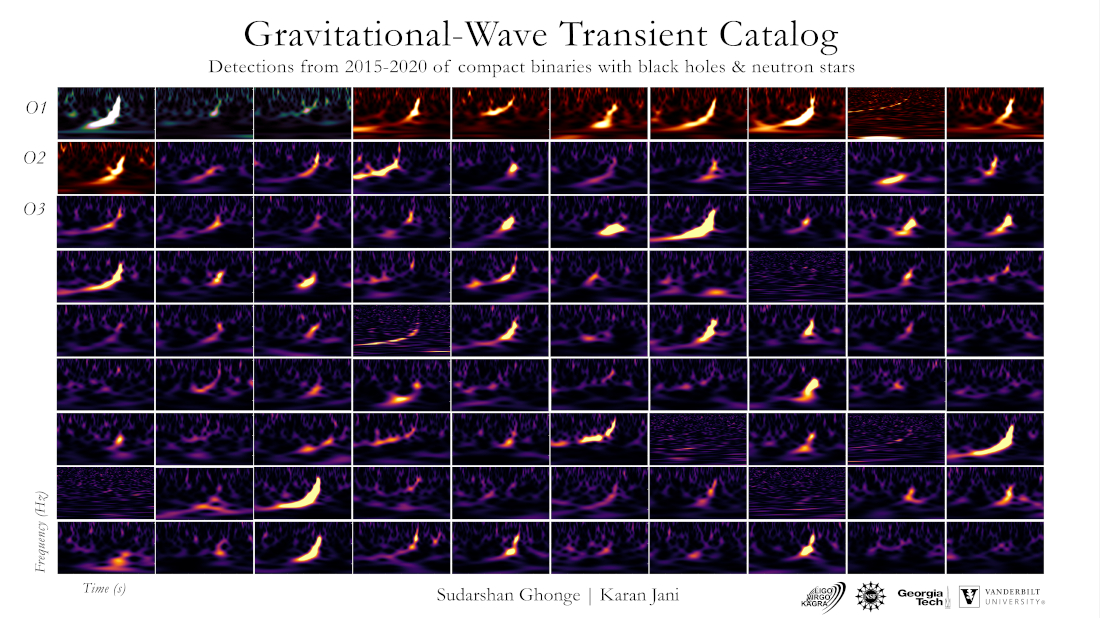
 Credit: LIGO/Virgo/KAGRA/S. Ghonge/K. Jani
Credit: LIGO/Virgo/KAGRA/S. Ghonge/K. Jani
Reducing the Number of Black Holes
It was only a mere six years ago when a totally new window on the Universe opened with the astonishing detection by LIGO of the very first gravitational wave signal produced by the collision and merger of two black holes. This historic announcement confirmed Einstein's prediction that acceleration of matter (even - especially - matter trapped inside the event horizon of a black hole) causes tiny wiggles in the fabric of space and time itself, and showed that black holes in binary systems actually do spiral together and merge, as had long been believed. Since that time, the field of gravitational wave astronomy has exploded, with new facilities coming online and existing facilities becoming ever more sensitive. On November 7, the LIGO-Virgo-KAGRA Collaboration released its latest catalog of merger events involving some combination of black holes and/or neutron stars, bringing to ninety the total number of such events observed. The image above is montage of the gravitational wave data for all ninety events. Each sub-image shows time increasing to the right, and the frequency of the oscillation of spacetime increasing toward the top. The bright streak in each image is the signal produced when two black holes (or a black hole and neutron star) merge; as time increases, spacetime oscillates faster and faster as the objects spiral closer and closer together, producing an audible chirp (if your ears were sensitive enough to hear it). After the merger occurs, the signal vanishes. The new catalog represents an increase of 35 such events detected in only four months. These mergers represent a total reduction of the number of black holes in the Universe, and also represent a decline in the total amount of mass in the Universe in the form of black holes.
Published: November 15, 2021
<
HEA Dictionary ● Archive
● Search HEAPOW
● Other Languages
● HEAPOW on Facebook
● Download all Images
● Education ● HEAD
>

Each week the HEASARC
brings you new, exciting and beautiful images from X-ray and Gamma ray
astronomy. Check back each week and be sure to check out the HEAPOW archive!
Page Author: Dr. Michael F. Corcoran
Last modified Monday, 26-Feb-2024 17:21:35 EST


